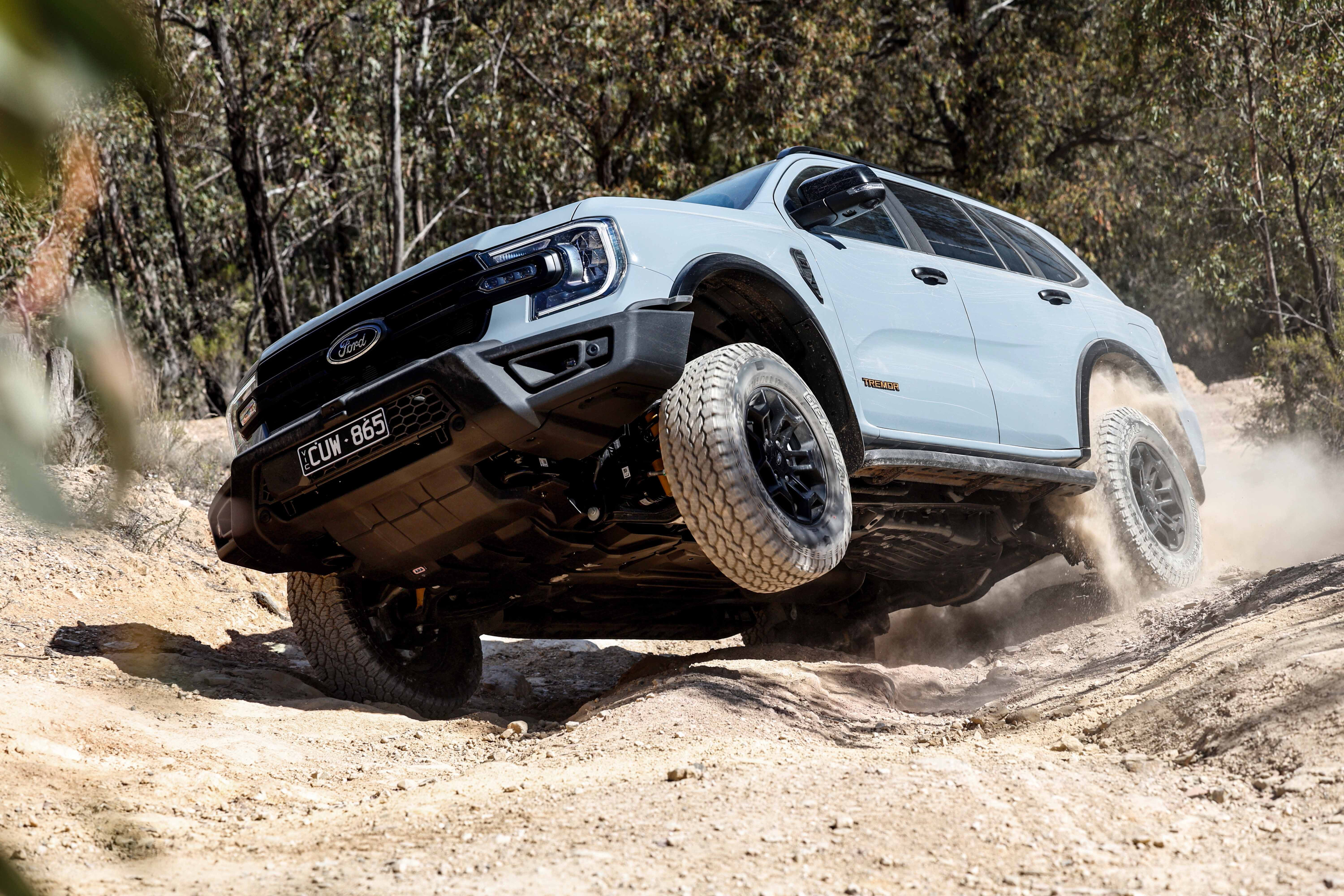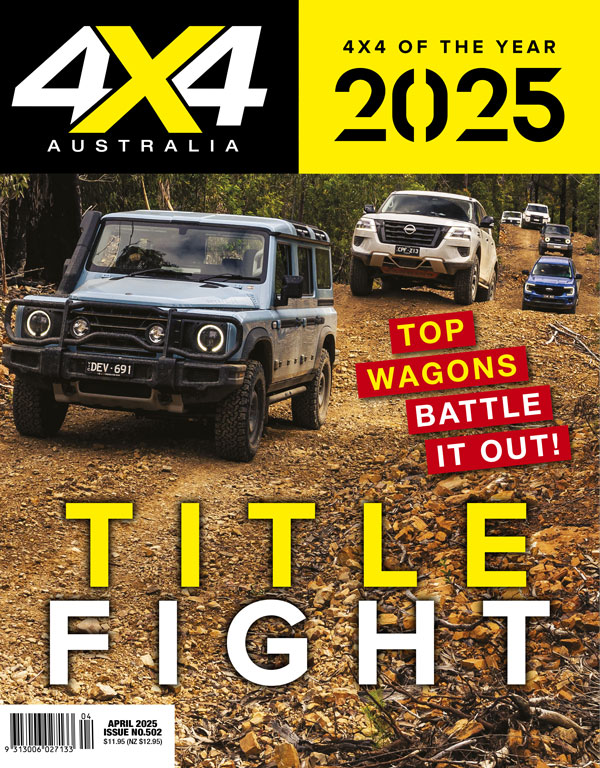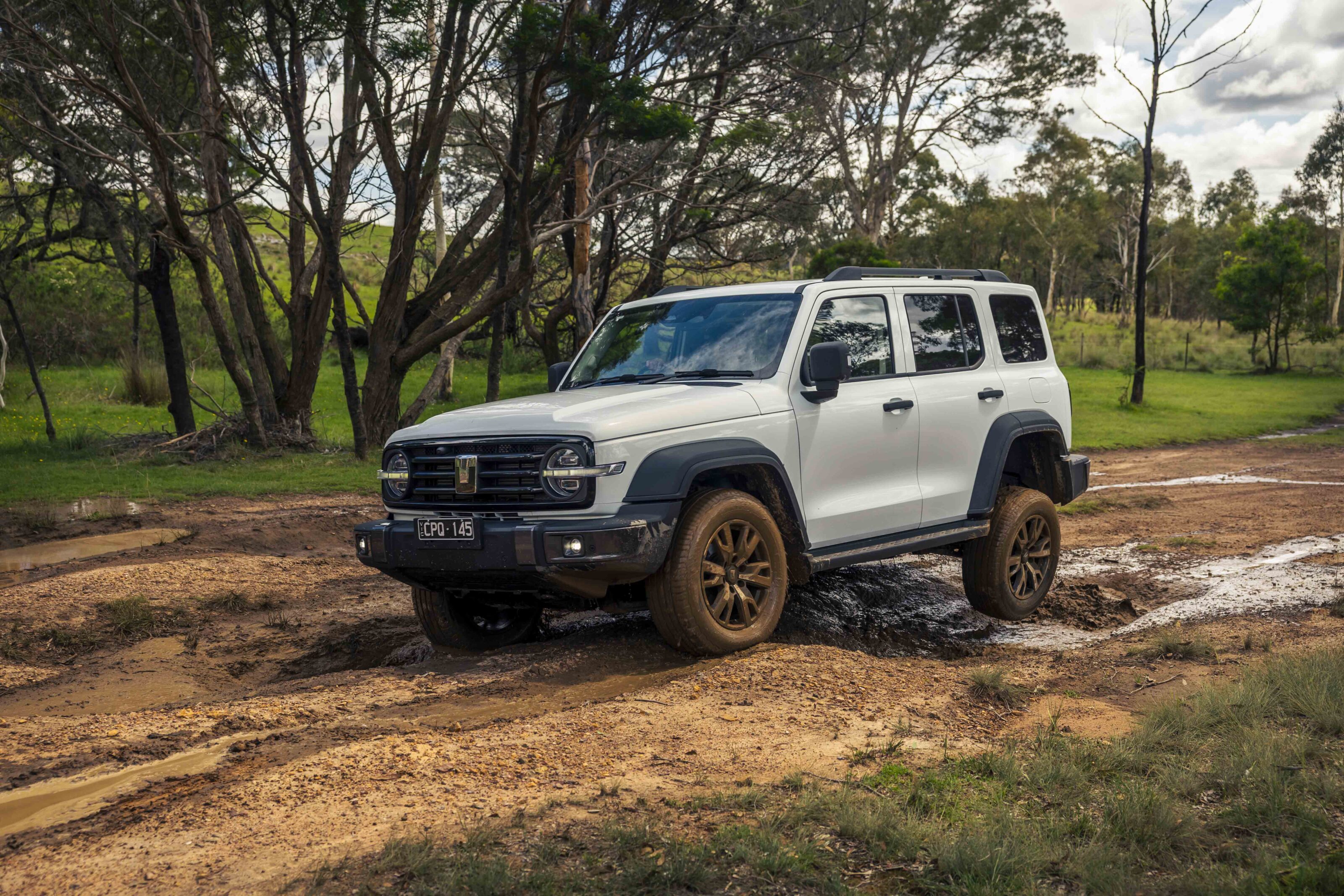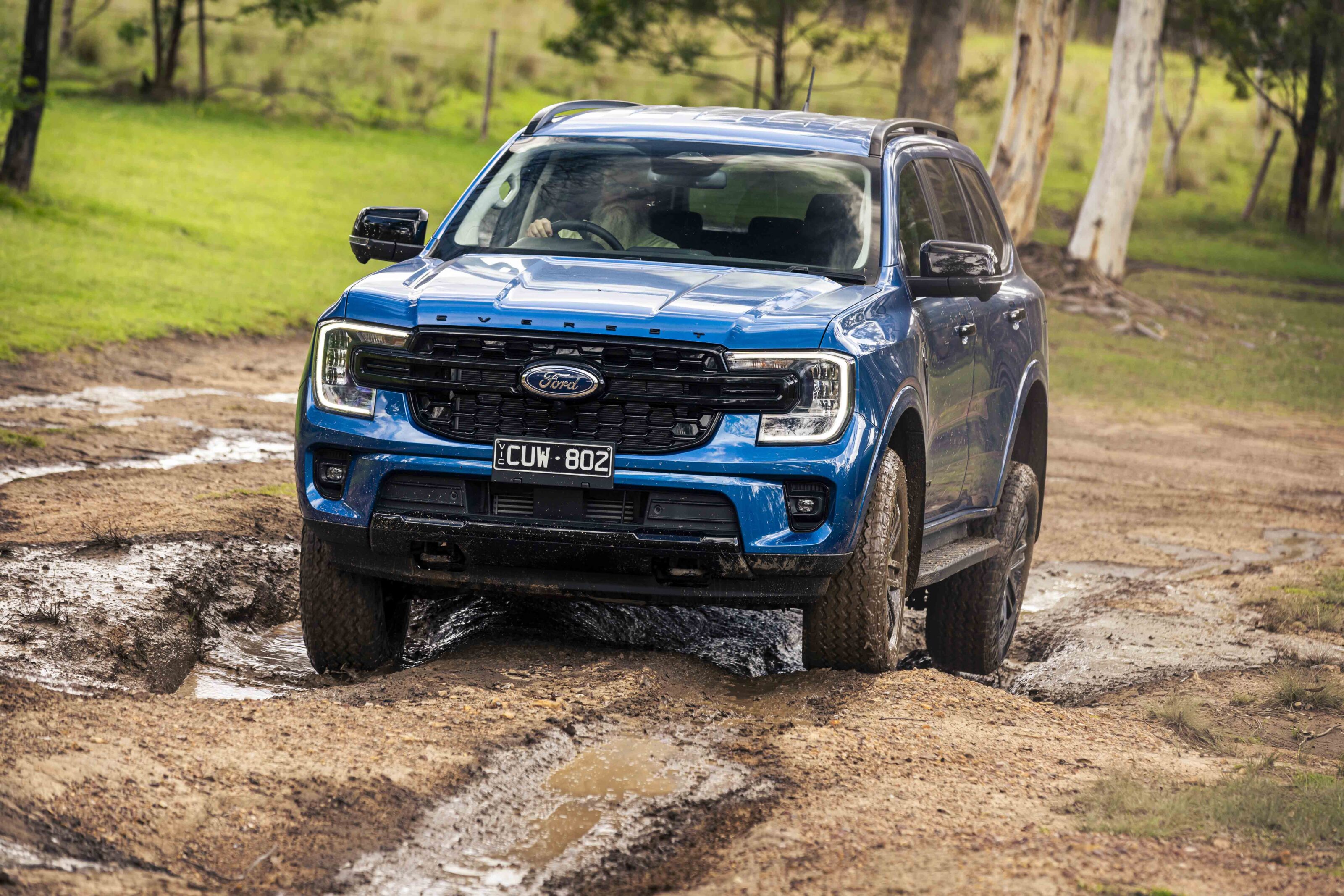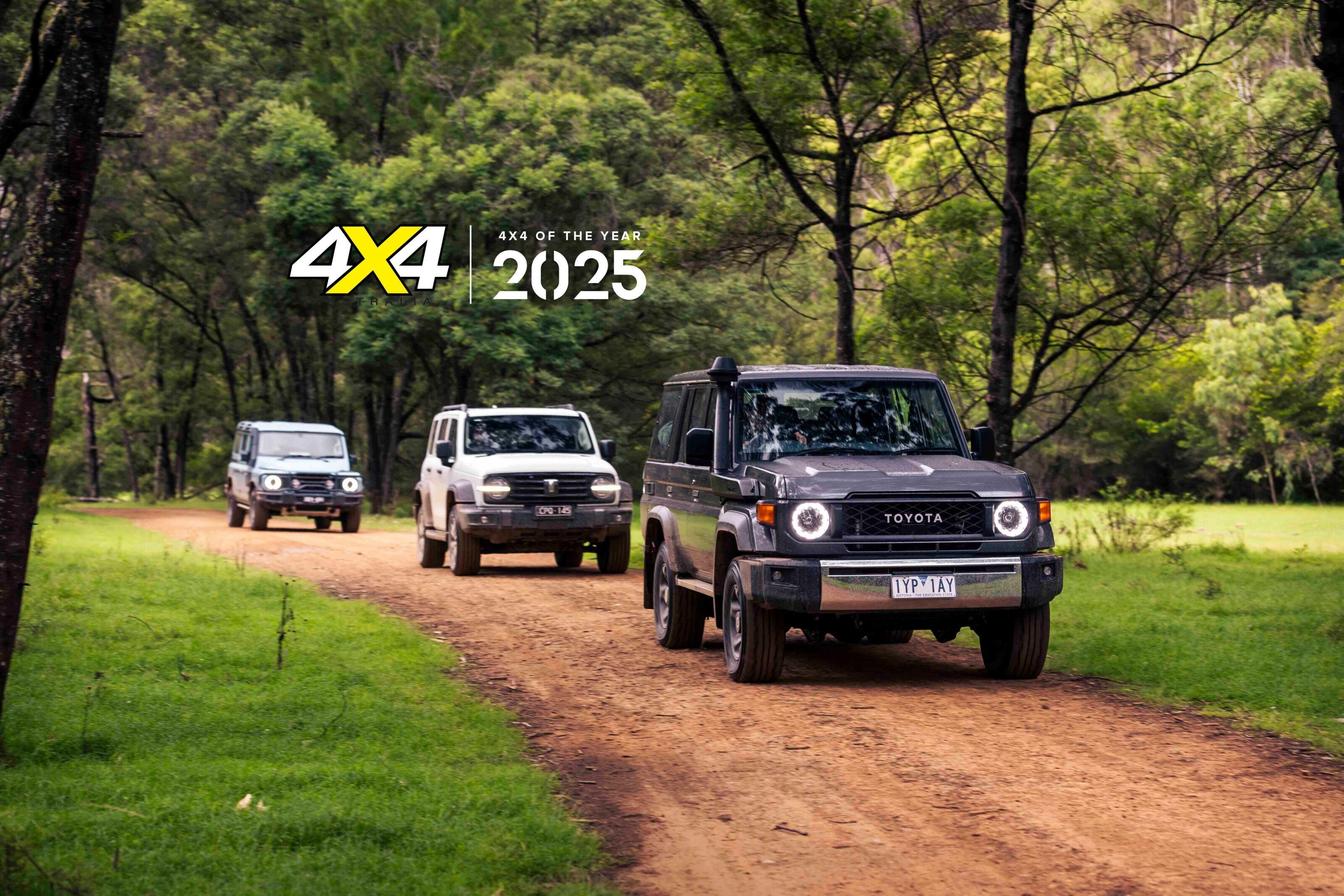Things we like
- Extended off-road capability
- Seven-seat accommodation
- Towing capacity
Not so much
- Touchscreen interface for important functions
- V6 is thirsty
- Getting pricey
It seems like buyers are catching on to the charms of off-road wagons over utes.
A decade in the making, the slow-burn Everest is starting to flex its showroom muscles and as we speak the vehicle is in first place in its segment (SUVs under $80k) and in 2024 was the country’s sixth best selling vehicle outright.
Crucially, where the family wagon once made up a tiny percentage of Ranger/Everest volumes, in 2024 the landscape changed dramatically with roughly 26,500 Everests sold to 60,000 Rangers. That’s getting dangerously close to 50 per cent. Look out Ranger!
JUMP AHEAD
What does it get?
So it’s no wonder Ford Oz is coming up with niches within niches to broaden the Everest’s appeal even further.
The latest is a badge – if not the specification – you’ve probably heard of. Sitting near the top of the Everest model ladder, the Everest Tremor provides the off-road counterpoint to the urban-warrior Platinum, and offers some serious mods aimed at making it a better bush weapon.
Tremor? Yep, you’ve seen the badge before on the Ranger Tremor, but the formula is not the same. For a start. The Ranger version is a limited-edition model, while in the Everest world, the Tremor will be a permanent fixture in the brochure. And where the Ranger Tremor runs the bi-turbo 2.0-litre four-cylinder engine, in the Everest, the Tremor badge buys you the 3.0-litre V6 turbo-diesel. Throw in the 10-speed automatic gearbox and permanent four-wheel-drive, and the Everest Tremor scores the driveline specification that is arguably the one you want.
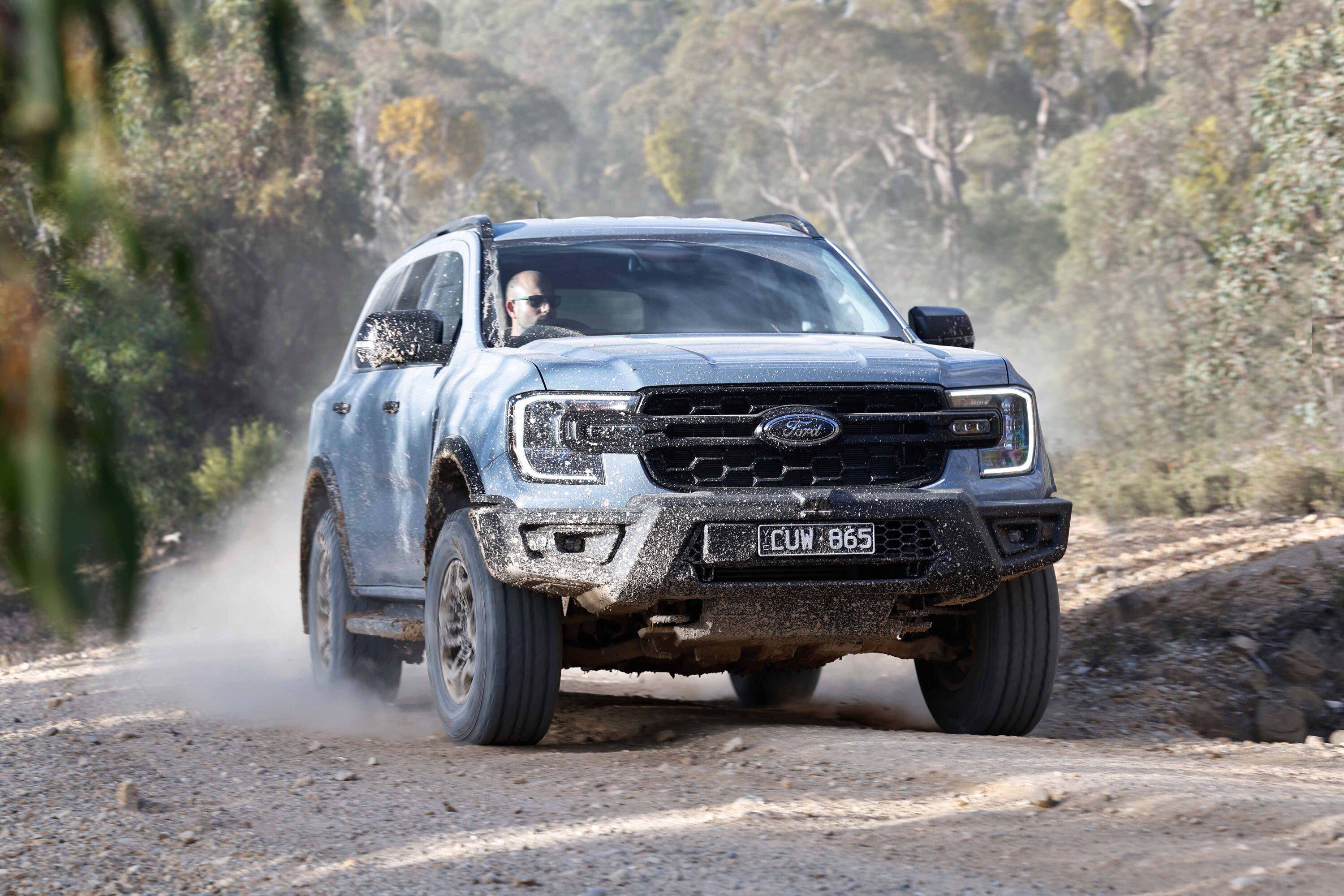
But that’s not all. Ford has also given the Tremor a new set of suspenders and some extra air under the bash plates. The dampers have been upgraded to Bilstein position-sensitive monotube gas-filled units complete with remote reservoirs. This is high-end stuff and it shows how serious Ford is about this model. Ditto the fact that Ford elected to tune the Tremor to our tastes right here in Australia with a dedicated engineering team.
The new springs provide an extra 29mm of ground clearance (for a total of 255mm) and a revised offset for the 17×8-inch alloys mean the front and rear track have grown by 30mm. Departure, approach and ramp-over angles are all improved by a couple of degrees too, and Ford has wisely fitted General Grabber 265/70R17 all-terrain tyres as standard. You also get auxiliary driving lights, steel bash plates and a pair of rated tow hooks at the front. Tyre pressure monitoring is another great touch and the side steps are now made from a composite material for more rut-resistance.
Ford dealers will be demanding $76,590 (plus on-road costs) for the privilege of driving away in a Tremor. Oh, and an extra 200 bills if you want a premium colour (like the hero grey).
Safety
This is one area Ford has taken very seriously and the strides made in the Ranger (to comply with OH&S demands) have been transferred to the Everest, which means it gets all the latest driver aids including Autonomous Emergency Braking (AEB), adaptive cruise-control, traffic sign recognition, lane-keeping assistance and rear cross-traffic alert. The AEB works up to 130km/h but its pedestrian and cyclist identification only works up to 80km/h.
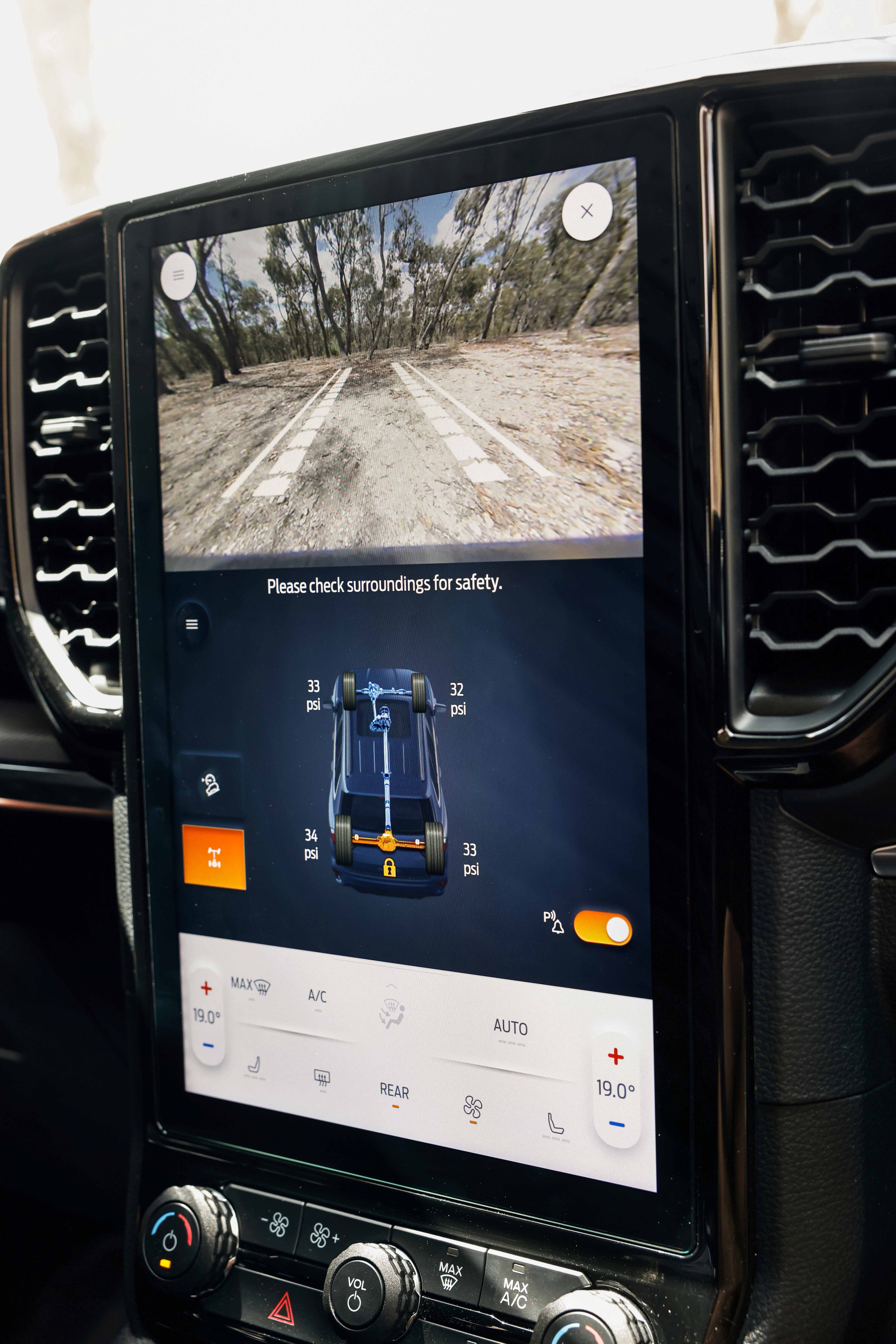
The lane-keeping assist program goes against the current grain by actually being reasonably subtle, making ‘suggestions’ through the helm rather than shouting orders. The surround camera and front-facing camera is also brilliant off-road.
The Tremor also gets the Everest’s nine airbags, including a centre bag to prevent head clashes in a side impact, and then there’s that tyre-pressure monitoring; worth its weight in gold. All Everest variants carry a five-star ANCAP safety rating.
Powertrain
The V6 turbo-diesel might be getting a bit long in the tooth but it’s still a great unit.
The 10-speed auto needs no introduction now and the ability to use four-wheel-drive on wet bitumen is – when towing, especially – a big win. As well as the existing drive modes (Sand, Eco, Tow/Haul, Slippery, Mud/Ruts and Normal) there’s a new spot on the dial called Rock Crawl. There’s the same standard rear diff lock as all Everest 4X4s which can operate at up to 32km/h.
The headline numbers for the engine are 184kW and 600Nm, and fuel economy is probably the major trade-off for the Tremor using the V6 over the bi-turbo. Figure on using somewhere between 12 and 14 litres per 100km in mixed, general use.
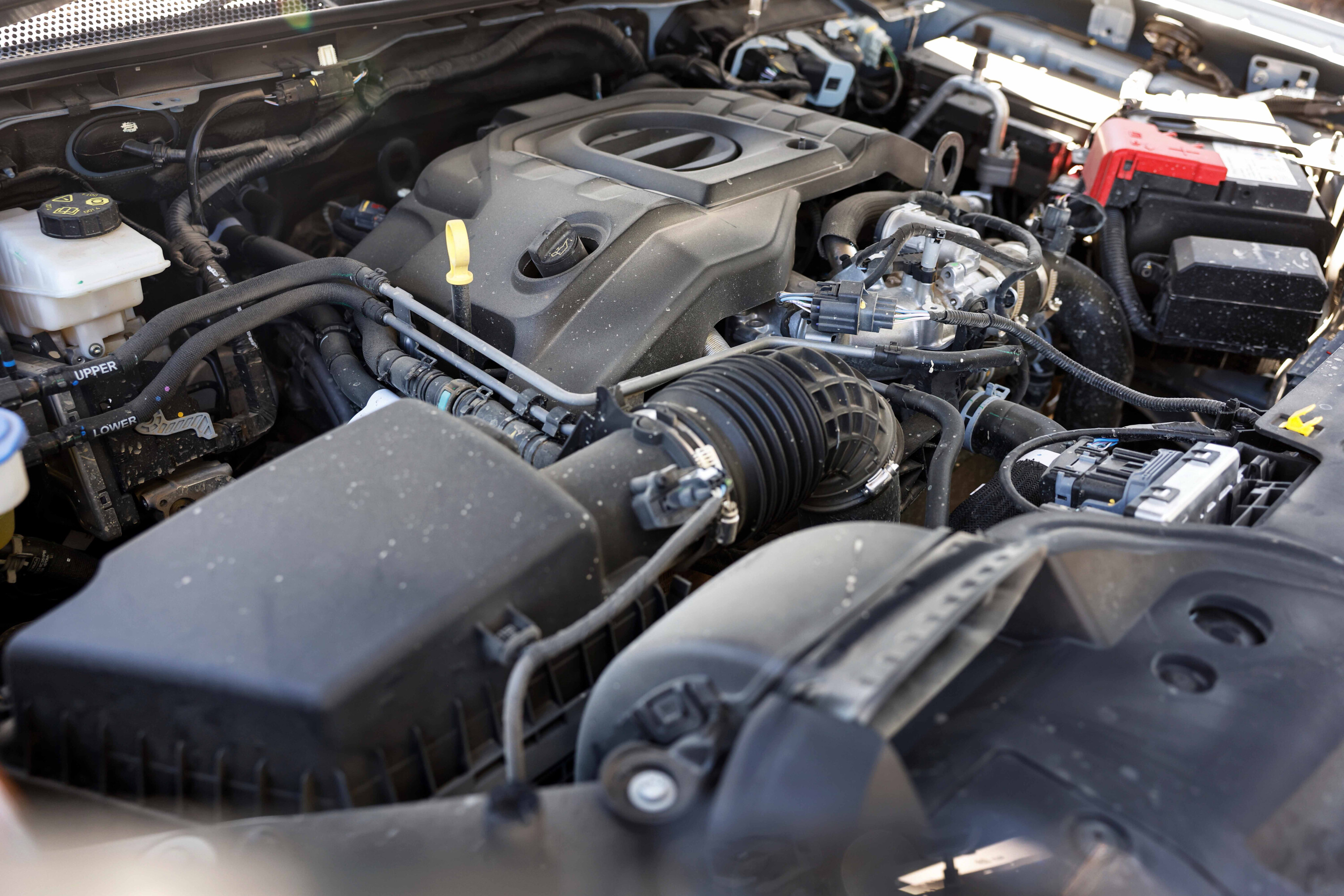
On- and off-road performance
The big difference between the Tremor and other V6 Everests is in the way it rides.
The jacked-up, firmed-up suspension doesn’t ruin it by any means, but it does give the ride a firmer edge compared with the relatively plush ride of the Everest on standard springs and dampers.
However, it doesn’t diminish the sharpness or the accuracy of the steering, nor does it alter the fact that the V6 is a magic piece of kit (the one we drove seemed even smoother than previous examples) and seems a really good match for the 10-speed auto. And the option to use full-time 4×4 on the highway in the wet is equally brilliant.
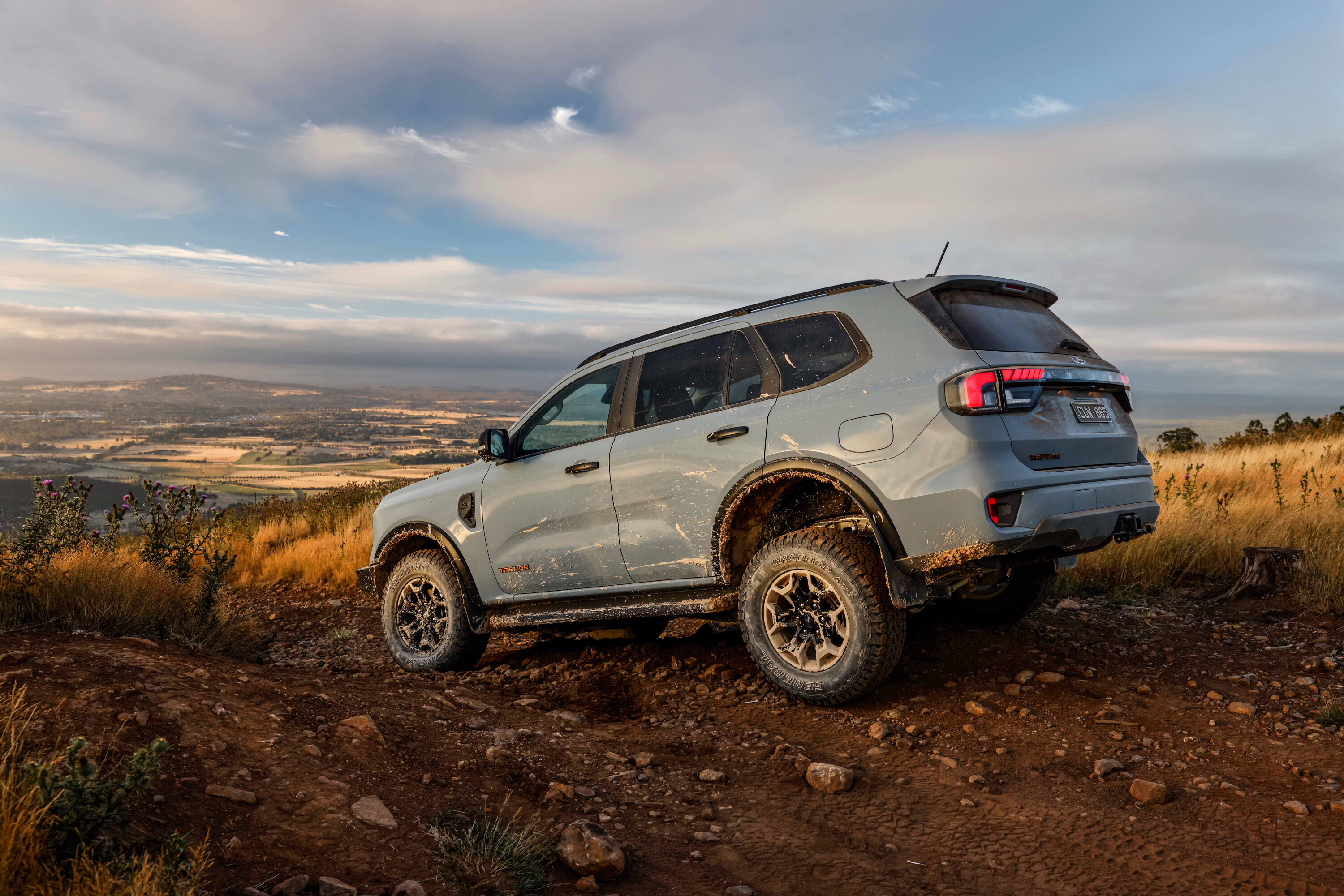
It is, of course, in the mulga where the Tremor-specific stuff comes into play. The lift gives a higher (literally) safety margin when dropping into ruts, and the bash plates equal peace of mind, too. But it’s the extra suspension travel and the brilliant control those dampers offer that really sets the Tremor apart. Extra firmness aside, at low speeds you can feel the dampers doing their best to keep each tyre planted and contributing to forward progress. The Everest Tremor is a vehicle that will really take some stopping.
| Off-road specs | |
|---|---|
| Departure angle | 26.8u00b0 |
| Rampover angle | 23.9u00b0 |
| Approach angle | 32.0u00b0 |
| Wading depth | 800mm |
| Ground clearance | 255mm |
Practicalities
With the potential to seat seven, the Everest is already ahead of many SUVs and all dual-cab utes when it comes to accommodation.
There are loads of storage cubbies, charging ports and power outlets around the cabin and luggage space, and the third row passengers also get cup-holders and storage bins. The second-row seat folds 60:40 and with all the rear seats stowed, the Everest offers a big load space.
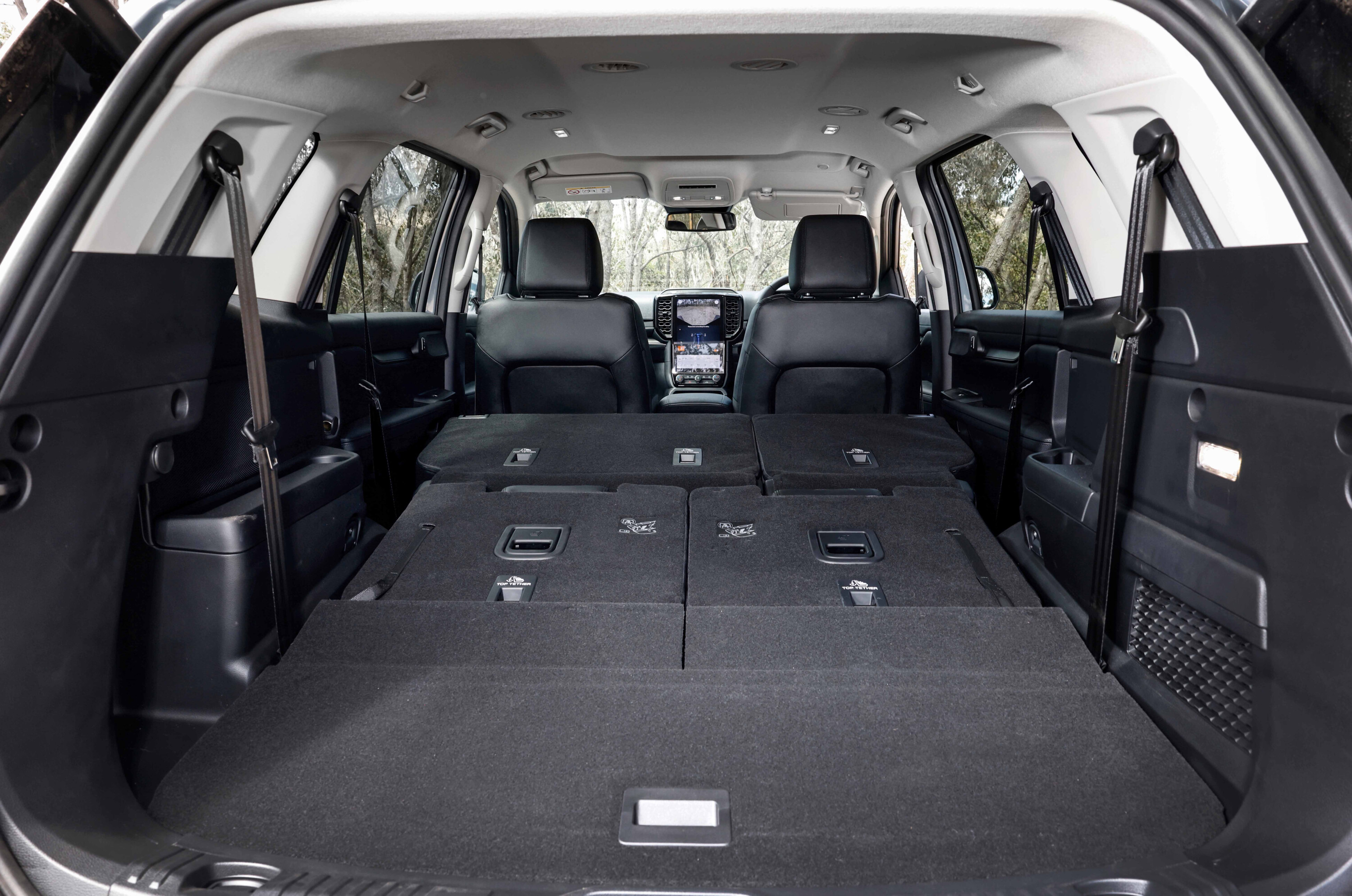
The large portrait touchscreen in the centre carries a lot of info, across numerous home-screens, so you need some time to get to grips with that. The steering column is reach and height adjustable and there’s keyless entry and start. However, we’re not so keen on having to engage the rear diff lock from the touch-screen … what’s wrong with a button?
Towing, are we? Then the Everest should still make your shortlist with its 3500kg braked-trailer limit that puts it up there with the best dual-cabs other than the huge American-made stuff.
Verdict
There’s one important truth we need to deal with here.
That is, if you’re buying the Tremor because it looks tough with the inch-and-a-bit lift, or for the hero blue-grey paint job, then you might be making a mistake. See, the Everest even in its most basic Ambiente form still gets a locking rear diff and is still a very capable thing in the bush. More than capable, impressive.
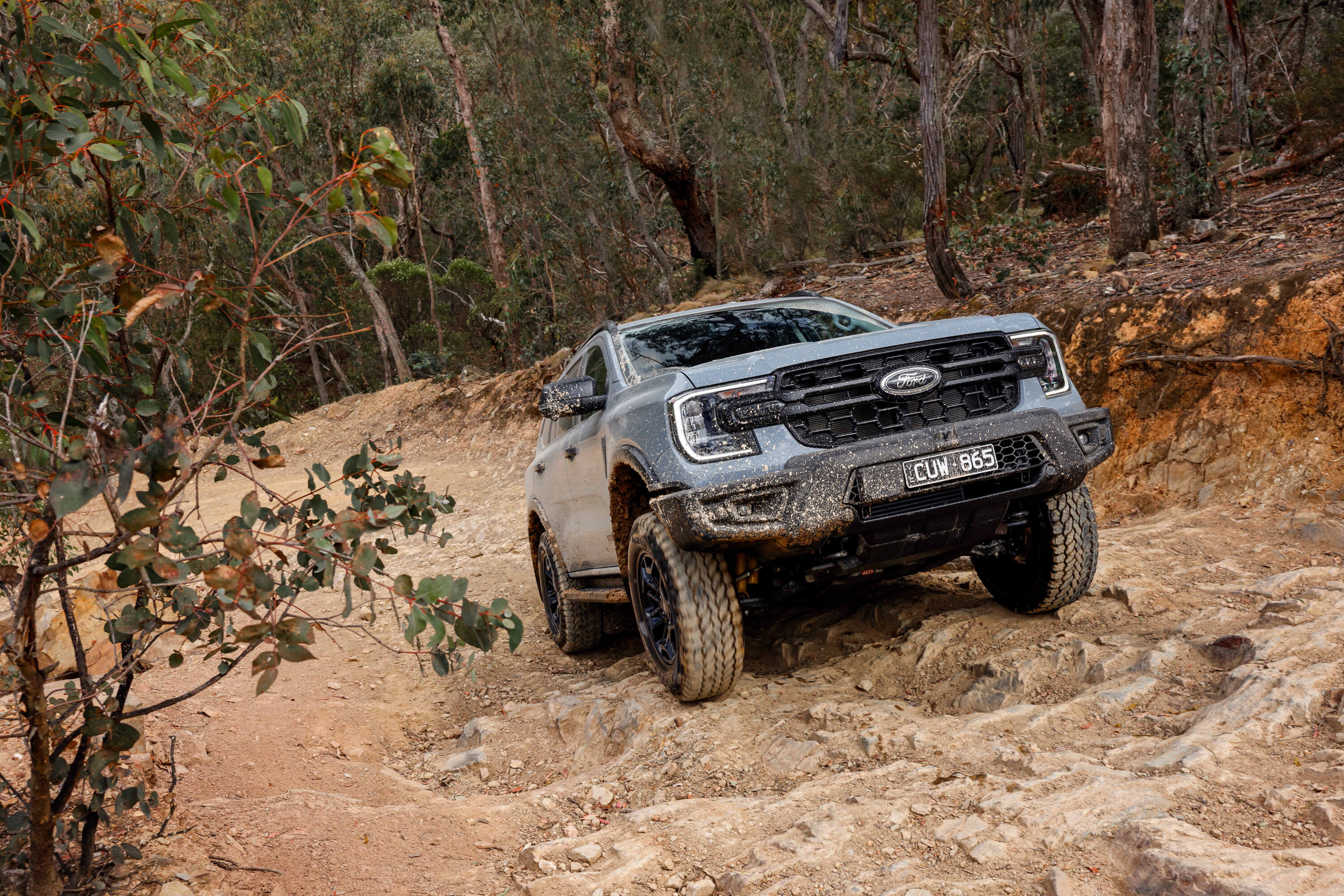
Yes, the Tremor will go farther with the extra clearance, flex and the grunt of the V6 engine, but unless you have big, big off-road plans that require this extra ability, then maybe the Tremor package will stop making sense. And that’s purely down to the trade off in ride quality on bitumen.
You’ll also use more fuel than an Everest with the bi-turbo 2.0L engine and your monthly lease repayments will be larger, too. But if you are tackling the north approach of a buttered cliff face, then the Tremor, of all the Everests, has the smarts to get you up and, critically, back down in one piece. Your call.
Specs
| 2025 Ford Everest Tremor | |
|---|---|
| Price | $76,590 +ORC |
| Engine | V6 turbo-diesel |
| Capacity | 3.0L |
| Max power | 184kW at 3250rpm |
| Max torque | 600Nm at 1750-2250rpm |
| Transmission | 10-speed automatic |
| 4×4 system | Full time 4×4, dual range, rear diff lock |
| Construction | 7-seat wagon body on ladder frame chassis |
| Front suspension | Independent, struts with coil springs |
| Rear suspension | Live axle, Watts linkage, coil springs |
| Tyres | 265/70R17 General Grabber on alloys |
| Kerb weight | 2550kg |
| GVM | 3240kg |
| GCM | 6350kg |
| Towing capacity | 3500kg |
| Payload | 690kg |
| Seats | 7 |
| Fuel tank | 80L |
| ADR fuel consumption | 9.5L/100km |
Things we like
- Extended off-road capability
- Seven-seat accommodation
- Towing capacity
Not so much
- Touchscreen interface for important functions
- V6 is thirsty
- Getting pricey

